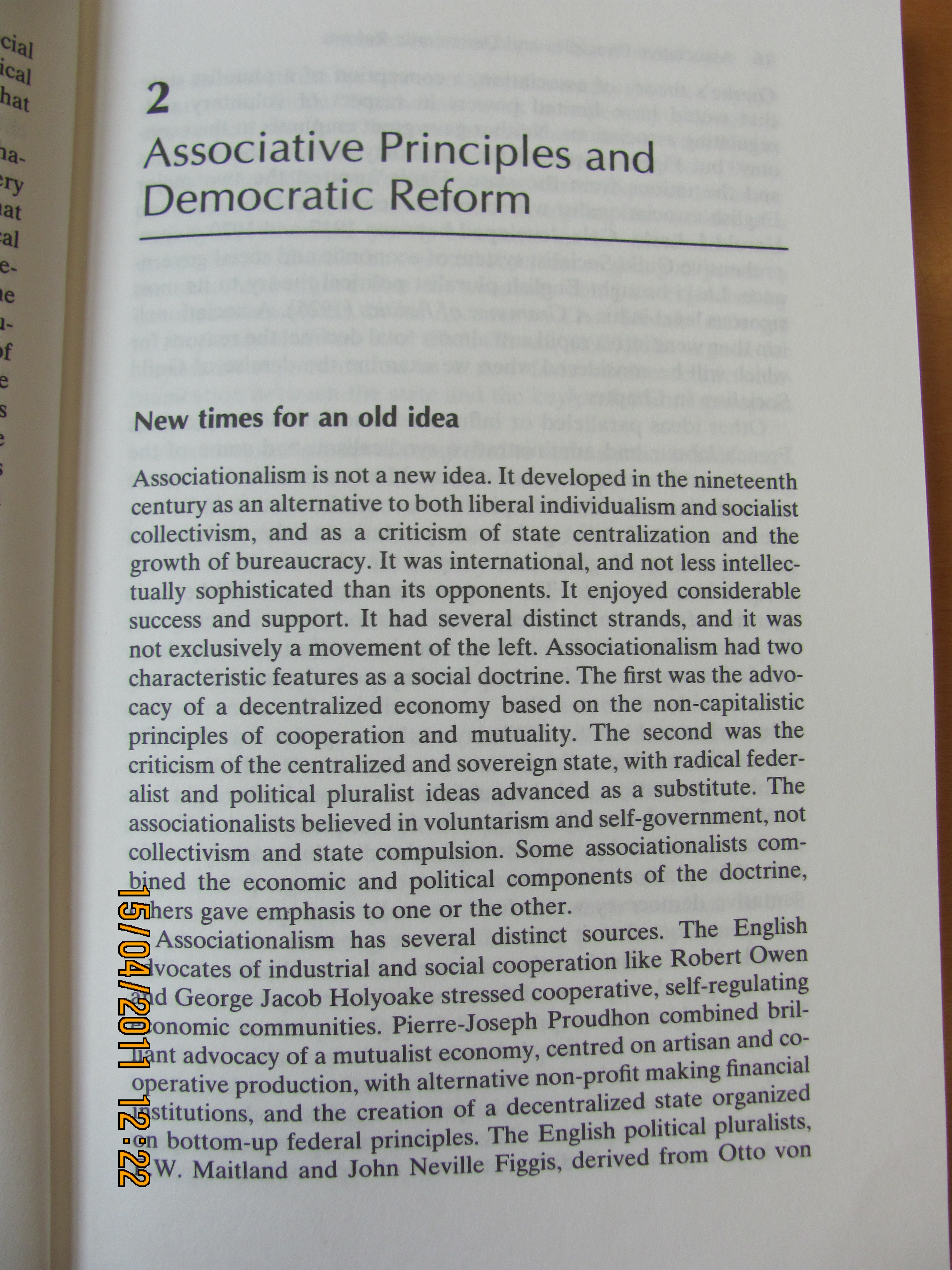IMG#03

Associative Principles and Democratic Reform
New times for an old idea
Associationalism is not a new idea. It developed in the nineteenth century as an altemative to both liberał individualism and socialist collectivism, and as a criticism of State centralization and the growth of bureaucracy. It was intemational, and not less intellec-tually sophisticated than its opponents. It enjoyed considerable success and support. It had several distinct strands, and it was not exclusively a movement of the left. Associationalism had two characteristic features as a social doctrine. The first was the advo-cacy of a decentralized economy based on the non-capitalistic principles of cooperation and mutuality. The second was the criticism of the centralized and sovereign State, with radical feder-alist and political pluralist ideas advanced as a substitute. The associationalists believed in voluntarism and self-govemment, not collectivism and State compulsion. Some associationalists com-bjped the economic and political components of the doctrine, ®]hers gave emphasis to one or the other.
^Associationalism has several distinct sources. The English c^śyocates of industrial and social cooperation like Robert Owen j^d George Jacob Holyoake stressed cooperative, self-regulating (honornie communities. Pierre-Joseph Proudhon combined bril-5iljint advocacy of a mutualist economy, centred on artisan and co-operative production, with alternative non-profit making financial jj^gstitutions, and the creation of a decentralized State organized °©n bottom-up federal principles. The English political pluralists, |S§jW. Maitland and John Neville Figgis, derived from Otto von
Wyszukiwarka
Podobne podstrony:
IMG#10 22 Associative Principles and Democratic Reform public power and of the devolved associationa
IMG#18 30 Associative Principles and Democratic Reform gain the upper hand and impose their view on
IMG#21 Associative Principles and Democratic Reform 33 legislative and regulative agency; a public p
IMG#31 Associative Principles and Democratic Reform 43 actualities. Whether associationalism can act
IMG#09 Associative Principles and Democratic Reform 21 We now tum to examine how associationalist an
IMG#11 Associative Principles and Democratic Reform 23 corporations, and if the great bulk of other
IMG#14 26 Associative Principles and Democratic Reform democratic naturę of the ‘primary association
IMG#20 32 Associative Principles and Democratic Reform Laski in ‘The Problem of Administrative Areas
IMG#08 20 Associative Principles and Democratic Reform yoluntary associations in order to do so. Ass
88880 IMG#28 40 Associative Principles and Democratic Reform democracy as communication have the adv
więcej podobnych podstron